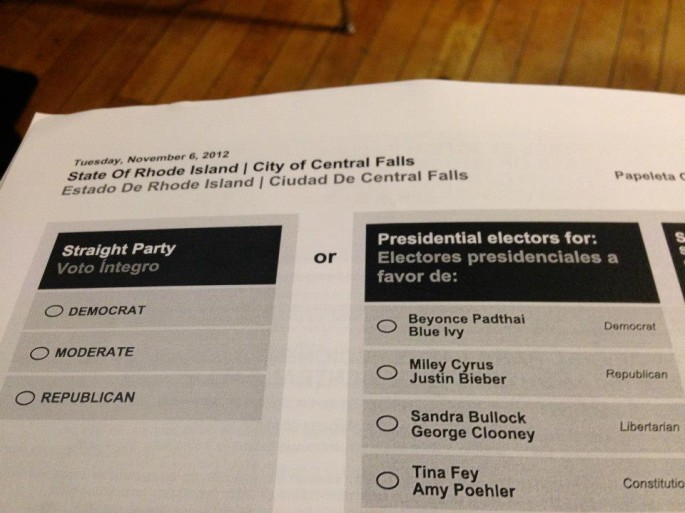Votelab: Designing for Democracy
Votelab: Designing for Democracy was a course taught at RISD (Rhode Island School of Design) during Wintersession 2014 by Benjamin Shaykin, with teaching assistants Kelsey Lim and Keela Potter.
Recent press:
Design students reimagine election ballot (video, NBC 10 WJAR 3/4/14)
Designing Better Ballots (RINPR 2/27/14)
Beyond Bumper Stickers (risd.edu 1/27/14)

The original course description:
Since Florida’s infamous “butterfly ballot†played a controversial role in the 2000 presidential election, there has been a growing awareness of the importance of design in elections. But it is not just the ballots themselves that deserve the attention of designers. The entire voting process is ripe for a redesign—from voter registration forms and the education materials sent in advance of the election, to the design of polling places and the experience of voting on election day.
What is the role of design in elections beyond the campaign poster and the bumper sticker? How can design promote civic engagement and participation, and make voting more efficient and effective? How can design thinking be applied to the public interest?
This course will focus its attention on voting here in Rhode Island as well as the implications for the broader U.S. electorate. Projects will range from practical proposals for the redesign of election materials to more conceptual explorations of the voting process.
“Design activity and political thought are indivisible.â€
—President Thomas Jefferson
“Good design can help us meet our commitment to improve the efficiency of government…and reaffirm our concern for the human side of government.â€
—President Jimmy Carter
“Design makes government policy something people can see, hear, touch, taste, and smell through designed objects, communications, environments, and experiences. The improved performance of government design can positively affect the experience of trust, accountability, and effectiveness between the U.S. government and the People.â€
—Dori Tunstall, Redesigning America’s Future (2009)